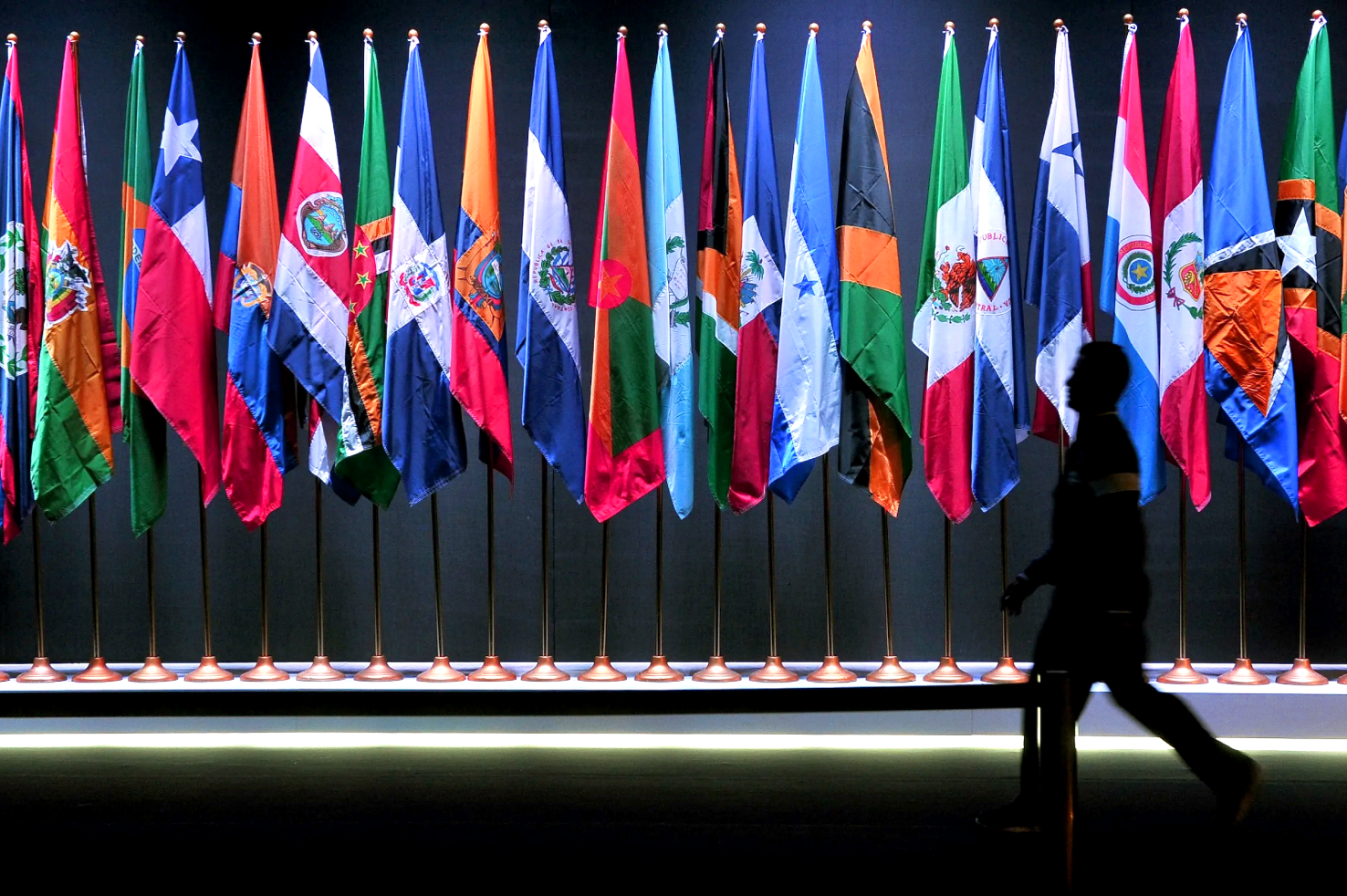One of the first concepts that business schools teach is that of competitive advantages in the production of goods and the benefits of outsourcing to maximize efficiency and profitability. When a company outsources part of its production processes in another country, it is called “offshoring”.
In many cases, this involves working with suppliers in remote locations, where production costs are significantly lower.
Since China joined the World Trade Organization (WTO) in late 2001, imports to the United States from that country have increased 400% and a significant portion of global production has moved there in search of lower costs, particularly labour.
However, as technology advances and production becomes less labor-intensive, minimizing logistics costs gains relevance. Companies find that they can optimize production if supply chains are regionally integrated, sharing time zones and logistical flexibility. The need for outsourcing is combined with proximity or “nearshoring”.
On the other hand, since the global financial crisis of 2008-2009, globalization has lost its luster and populist leaders around the world, both left and right, have tried to capitalize on votes with a nationalist approach.
However, even the most protectionist political discourse cannot challenge the financial profitability of companies, meaning that trade will continue, but most likely in a different form. The push for nearshoring became even greater after the COVID-19 pandemic, when the fragility associated with global supply chains became evident. Then, Russia invaded Ukraine, bringing with it the risk of gas shortages in Europe and a shock to global food prices. In the article “Globalization in the age of Trump”, published by the Harvard Business Review in 2017, Pakaj Ghemawat stated that “companies (…) should look for opportunities where they can find cultural, administrative/political, geographic and economic affinities ”. Unknowingly, his statement, or rather, premonition, was right. Google Trends shows that searches for the term "nearshoring" increased 32% between February and July 2022, compared to the same period in 2021. During the pandemic (2020 and 2021), the same searches grew by 63% compared to pre-pandemic levels, and nearly 250% between 2022 and 2024. Likewise, searches in Latin America rose ~300% between 2022 and 2024, while in Asia-Pacific (APAC) countries they grew ~100%.
The Inter-American Development Bank (IDB) estimates that nearshoring could bring with it an opportunity of an additional 80 billion dollars for Latin American and Caribbean exports in the coming years, mainly due to the increase in trade in goods (+82%), but also related to the exchange of services. As expected, given their relative sizes in the region, Brazil and Mexico would have the greatest advantages, but even smaller countries such as the Dominican Republic or Haiti would benefit from a change in the dynamics of global trade.
However, there are challenges for this scenario to come to fruition, especially if one takes into account the structural problems that have also prevented Latin America from achieving its growth potential. To achieve this, the IDB recommends the “3i” strategy to countries: investment, infrastructure and integration.
One of the biggest challenges is the uncertainty around investment. In general terms, Latin America is somewhere in the middle when it comes to Rule of Law indicators (as classified by the Social Justice Project, WJP). However, the score has been steadily deteriorating since 2016, dragged down by worsening respect for fundamental rights, which the WJP describes as the absence of discrimination, right to life and security, due process of law and freedom of property, expression, assembly and beliefs, as well as respect for fundamental labor rights. While perceptions of fundamental rights have worsened in all major countries, Brazil has been behind much of the decline in these indicators. According to the World Bank, of the five largest economies in the region, only two experienced improvements in some categories measured by the WJP: government openness and regulatory compliance in the case of Argentina, and order and security in the case of Colombia.
In addition to respect for the rule of law, Latin America faces a series of structural problems such as insecurity, inequality and low penetration of formal financial services, which does not help in attracting private capital. Public investments have also faltered, recording one of the lowest Research and Development (R&D) investment rates as a percentage of Gross Domestic Product (GDP). Until this changes and there is a greater focus on access to quality education, the end result will be greater job creation but of low quality and, eventually, replaceable by technological advances. It is noteworthy that, despite fewer enrollments in higher education, Latin America produces more science, technology, engineering and mathematics graduates than the United States.
In terms of infrastructure, the region lags far behind its Asian competitors. According to the World Bank, Latin America ranks low in terms of infrastructure and has generally seen a steady deterioration in global rankings since 2007. 15 years ago, Chile, a regional leader in general infrastructure quality, ranked 30th out of 134 countries. However, in 2017 it fell to 35th place while Brazil reached 108th place.
Finally, the importance of integration lies in the opportunity to maximize added value. When trade fails to integrate regionally, the added value is minimized given the logistical costs of shipping inputs over long distances. For example, importing loose parts from Asia to assemble a car in Mexico reduces Mexican manufacturing facilities to mere assemblers, which implies that technological and quality demands are lower. On the other hand, regionalized production requires the exchange of new skills and technologies, best practices and improved management capacity, which maximizes added value.

"The Inter-American Development Bank (IDB) estimates that nearshoring could bring with it an opportunity of an additional 80 billion dollars for Latin American and Caribbean exports in the coming years, mainly due to the increase in trade in goods (+82%), but also related to the exchange of services"
In general terms, Latin America is well integrated with the world. Chile and Mexico lead the way with 55 and 37 regional trade agreements (RTAs) for goods and economic integration agreements (IEAs) for services, respectively. Brazil has significant room for improvement, since, despite being the largest economy and a major producer of raw materials, it does not have any RTAs with China or North America, excluding Mexico.
But why is Latin America so “isolated” despite having several trade agreements to promote trade within the region? There are two main culprits: politics and infrastructure. The continuous swings from left to right and vice versa have kept governments focused on the idiosyncrasies of their countries, limiting real options for economic regionalization. In addition to infrastructure challenges, logistics are also complex within the region itself. Despite an extensive border, there are only four crossings between Argentina and Chile and a single train line links the two countries. To connect the Atlantic with the Pacific, there is only one highway that runs through Brazil and Peru or the Panama Canal. And all this excludes the additional time and effort of bureaucracy that generates paperwork, certifications and inspections and opens space for corruption. In its book “The Age of Productivity: How to Transform Economies from the Ground Up,” the IDB estimates that, as a whole, Latin America spends almost twice as much as the United States on importing goods, since, for example, only Freight costs represent 6.6% of the total value compared to 3.4% in the United States. According to the publication, a 10% reduction in these costs could, on average, increase the productivity of plants in Chile and Brazil by 0.6%.

"Latin America is well positioned, especially as Latin American companies have invested over the years and are now so sophisticated and global to compete on equal terms with their developed market peers. Much of the responsibility, however, lies with governments"
However, the challenges have a solution and the region has a great opportunity to position itself before the United States as a production center given its geographical proximity. Its advantages have not gone unnoticed by private equity firms that have invested more than $15 billion in the first half of 2022 alone, according to the Association for Private Capital Investment in Latin America.
From a goods perspective, Latin American exports, led by Mexico, focus primarily on machinery and transportation. However, there are still room to increase participation, since this category represents 67% of total US imports compared to only 49% of the region's exports. On the other hand, the textile industry represents the greatest opportunity for Central American countries, among which Honduras, El Salvador and Guatemala show the best positioning (not counting Mexico).
| LATIN AMERICA: NOW OR NEVER
In a world of continuous integration, competitive strategies are shifting from a pure cost perspective to considering logistics and geopolitics. A few months ago, the former president of the Fed Reserve, Janet Yellen, coined the term "friendshoring" or outsourcing to “friendly” countries as the new close outsourcing, when the world realized that ensuring uninterrupted trade goes beyond geographical borders and must take into account cultural and political idiosyncrasies.

Latin America is well positioned, especially as Latin American companies have invested over the years and are now so sophisticated and global to compete on equal terms with their developed market peers. Much of the responsibility, however, lies with governments. First, regardless of political ideologies, institutions must be respected and work to generate more inclusive and sustainable growth. This should allow for greater investment certainty and a strong sense of respect for the rule of law. Bureaucracy needs to be kept to a minimum as regional integration is at the forefront of trade priorities. Finally, public investments in infrastructure and education would not only facilitate trade, but secure a place for the region as a global manufacturing hub in the coming years, as technology pushes even further toward brain manufacturing.

Nur Cristiani
Head of Latin America Investment Strategy, J.P. Morgan Private Bank.
jpmorgan.com




